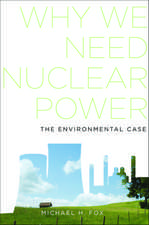Energy and Environmental Policy Modeling: International Series in Operations Research & Management Science, cartea 18
Autor John Weyanten Limba Engleză Paperback – 10 oct 2012
| Toate formatele și edițiile | Preț | Express |
|---|---|---|
| Paperback (1) | 940.09 lei 6-8 săpt. | |
| Springer Us – 10 oct 2012 | 940.09 lei 6-8 săpt. | |
| Hardback (1) | 947.98 lei 6-8 săpt. | |
| Springer Us – 31 dec 1998 | 947.98 lei 6-8 săpt. |
Din seria International Series in Operations Research & Management Science
- 20%
 Preț: 331.25 lei
Preț: 331.25 lei - 9%
 Preț: 696.05 lei
Preț: 696.05 lei - 20%
 Preț: 570.61 lei
Preț: 570.61 lei - 18%
 Preț: 1132.02 lei
Preț: 1132.02 lei - 18%
 Preț: 773.72 lei
Preț: 773.72 lei -
 Preț: 170.39 lei
Preț: 170.39 lei - 17%
 Preț: 459.34 lei
Preț: 459.34 lei - 17%
 Preț: 360.47 lei
Preț: 360.47 lei -
 Preț: 263.40 lei
Preț: 263.40 lei - 24%
 Preț: 905.30 lei
Preț: 905.30 lei - 17%
 Preț: 460.08 lei
Preț: 460.08 lei - 17%
 Preț: 459.34 lei
Preț: 459.34 lei - 20%
 Preț: 631.58 lei
Preț: 631.58 lei - 13%
 Preț: 480.00 lei
Preț: 480.00 lei - 18%
 Preț: 738.28 lei
Preț: 738.28 lei - 18%
 Preț: 1225.94 lei
Preț: 1225.94 lei - 18%
 Preț: 948.92 lei
Preț: 948.92 lei - 18%
 Preț: 703.88 lei
Preț: 703.88 lei - 18%
 Preț: 957.44 lei
Preț: 957.44 lei - 15%
 Preț: 651.84 lei
Preț: 651.84 lei - 20%
 Preț: 336.21 lei
Preț: 336.21 lei - 15%
 Preț: 641.03 lei
Preț: 641.03 lei -
 Preț: 404.29 lei
Preț: 404.29 lei - 18%
 Preț: 950.21 lei
Preț: 950.21 lei - 15%
 Preț: 649.06 lei
Preț: 649.06 lei - 18%
 Preț: 725.75 lei
Preț: 725.75 lei -
 Preț: 394.12 lei
Preț: 394.12 lei - 18%
 Preț: 951.47 lei
Preț: 951.47 lei - 15%
 Preț: 639.59 lei
Preț: 639.59 lei - 18%
 Preț: 773.06 lei
Preț: 773.06 lei - 18%
 Preț: 889.29 lei
Preț: 889.29 lei - 15%
 Preț: 655.60 lei
Preț: 655.60 lei - 15%
 Preț: 640.06 lei
Preț: 640.06 lei
Preț: 940.09 lei
Preț vechi: 1146.44 lei
-18% Nou
Puncte Express: 1410
Preț estimativ în valută:
179.88€ • 188.82$ • 149.31£
179.88€ • 188.82$ • 149.31£
Carte tipărită la comandă
Livrare economică 10-24 aprilie
Preluare comenzi: 021 569.72.76
Specificații
ISBN-13: 9781461372486
ISBN-10: 1461372488
Pagini: 204
Ilustrații: VIII, 192 p.
Dimensiuni: 155 x 235 x 11 mm
Greutate: 0.29 kg
Ediția:Softcover reprint of the original 1st ed. 1999
Editura: Springer Us
Colecția Springer
Seria International Series in Operations Research & Management Science
Locul publicării:New York, NY, United States
ISBN-10: 1461372488
Pagini: 204
Ilustrații: VIII, 192 p.
Dimensiuni: 155 x 235 x 11 mm
Greutate: 0.29 kg
Ediția:Softcover reprint of the original 1st ed. 1999
Editura: Springer Us
Colecția Springer
Seria International Series in Operations Research & Management Science
Locul publicării:New York, NY, United States
Public țintă
ResearchCuprins
1: Introduction and Overview.- Basic Concepts.- Overview of Book.- References.- 2: Technological Advances in Recovery Methods and Efficient Allocation Of a Non-Renewable Resource.- Technological Advances in Petroleum and Natural Gas Recovery.- The Computational Model and Base Case Assumptions.- Computational Results.- On the Generality of the Results.- Concluding Remarks.- References.- Endnotes.- 3: A Concurrent Auction Model for Transmission Congestion Contracts.- Transmission Congestion Contracts.- Concurrent Auction.- Example Auction.- Including Losses and Reactive Power.- Extensions.- Conclusion.- Endnotes.- 4: Spot Markets in Electric Power Network: Theory.- A Simple Model of Electric Power Network.- A Market Mechanism.- A Dynamic Trading Process.- An Illustrative Example.- Conclusions.- References.- Endnotes.- 5: The Berlin Mandate: The Design of Cost-Effective Mitigation Strategies.- The Models.- Future Emissions.- The Costs of Alternative Commitments.- Some Final Comments.- Endnotes.- 6: Some Implications of Improved CO2 Emissions Control Technology in The Context of Global Climate Change.- The CETA-R Model.- Technology Assumptions.- Implications of Loss Probability and Technology Assumptions.- Improved Technology and the Value of Information About Damage.- Value of Information about Technology and Benefits of Improved Technology.- Summary and Conclusions.- References.- Endnotes.- 7: Determining an Optimal Afforestation Policy: A Cost-Benefit Analysis.- — Motivation and afforestation.- Research Objectives.- Structural Overview.- Regionalization and Model Data.- Results and Conclusions.- Conclusion.- References.- 8: Economic Incentives, Intergenerational Altruism and Sustainability.- Sustainability, Discounting and Selfish Egoism.- Modeling.- ComputationalExperiments.- Conclusions.- References.- Appendix: Data.- Endnotes.- 9: Sequential Joint Maximization.- General Equilibrium in a Complementarity Format.- Integrable Heterogeneous Demand and a Joint Maximization Algorithm.- Joint Maximization with Dual Functions.- The Connection Between SJM, SLCP and VI.- Convergence.- Conclusion.- References.- Appendix A: Extensions of the SJM Algorithm.- Appendix B: GAMS Code.- Scarf’s globally unstable exchange model.- Endnotes.- 10: A Brief History of the International Energy Workshop.- The International Energy Workshop.- The First IEW Meeting.- The IEW’s “Oil Price Era”.- The “CHALLENGE ERA”.- Methodological Considerations.- References.- Endnotes.













